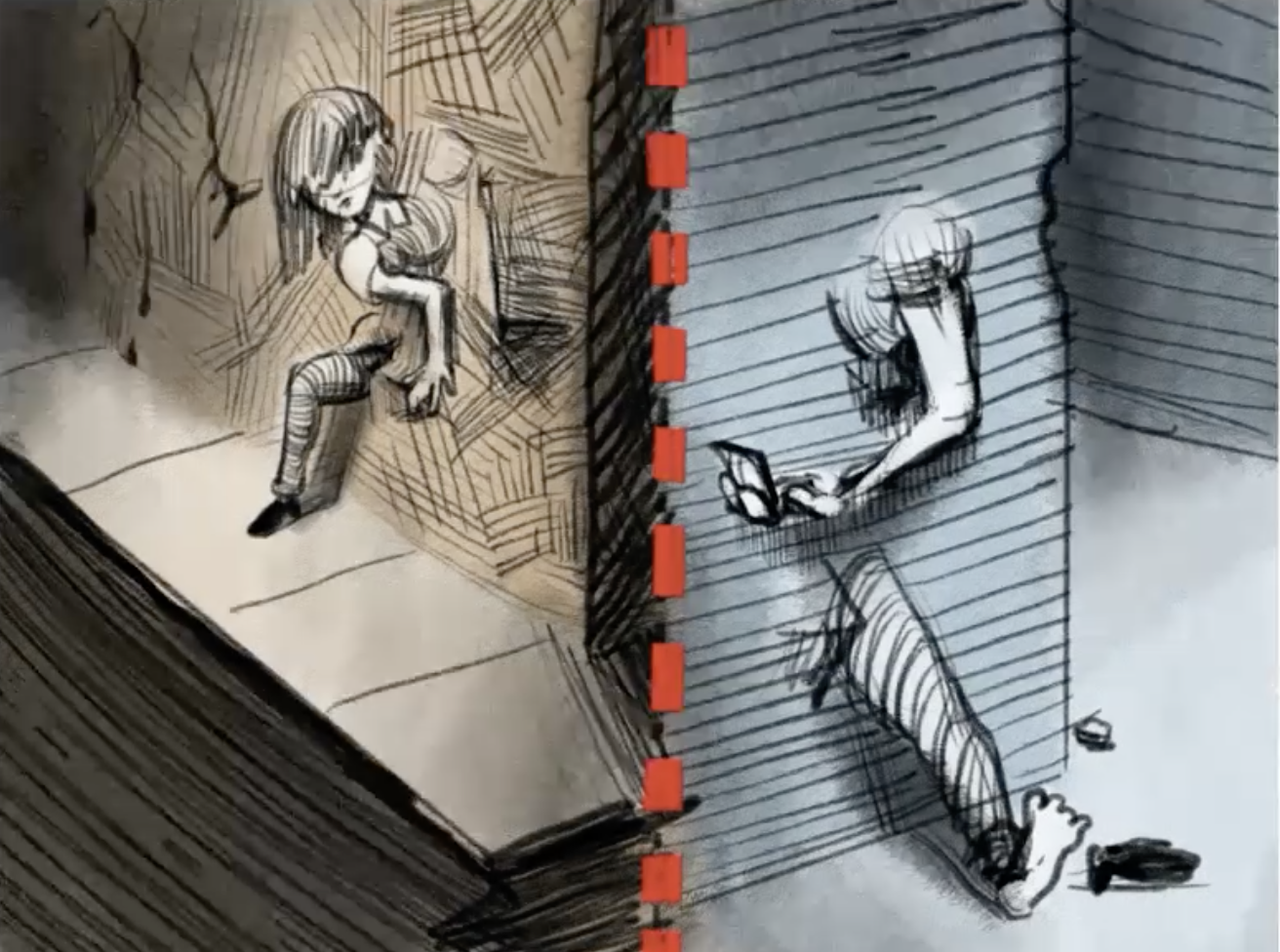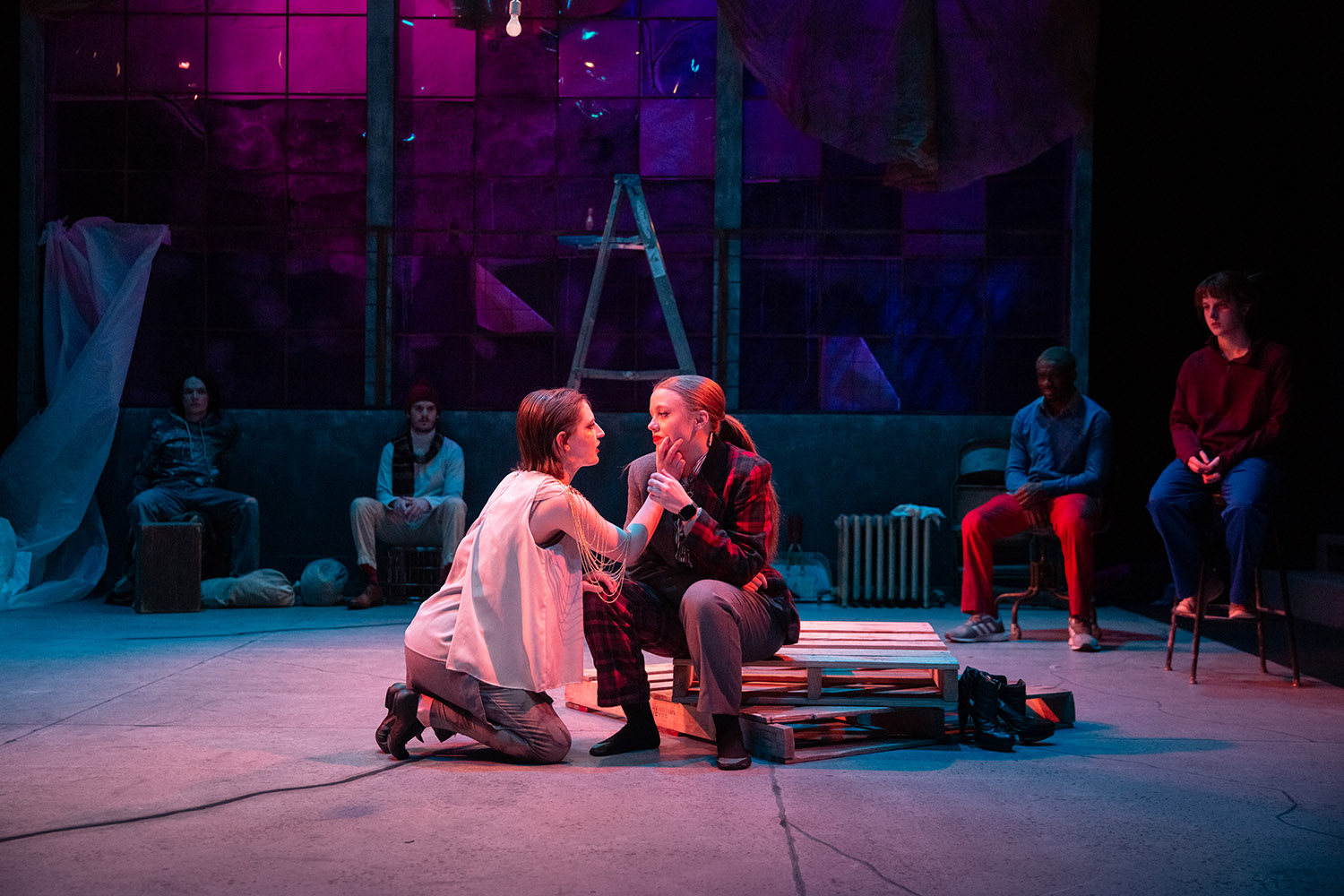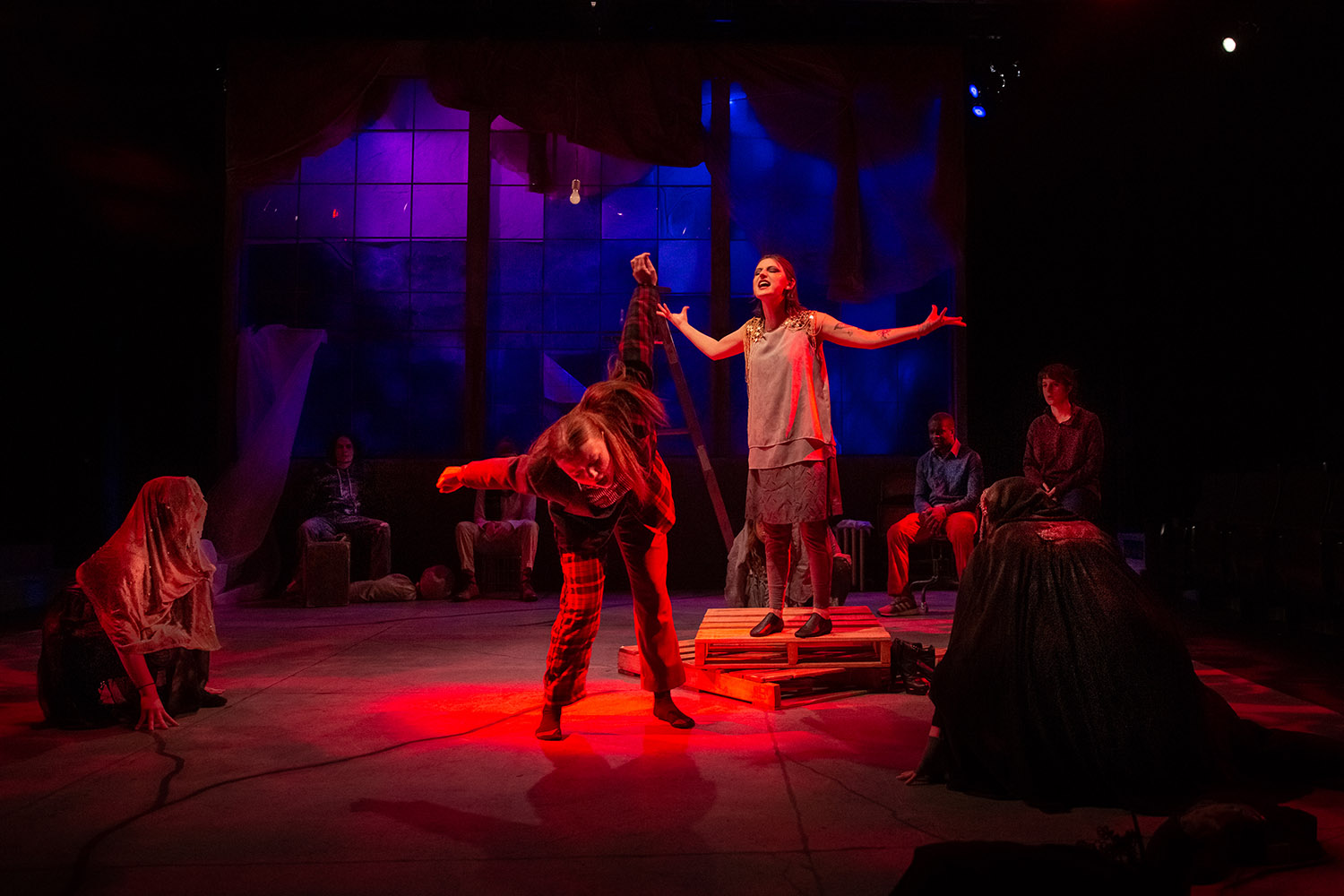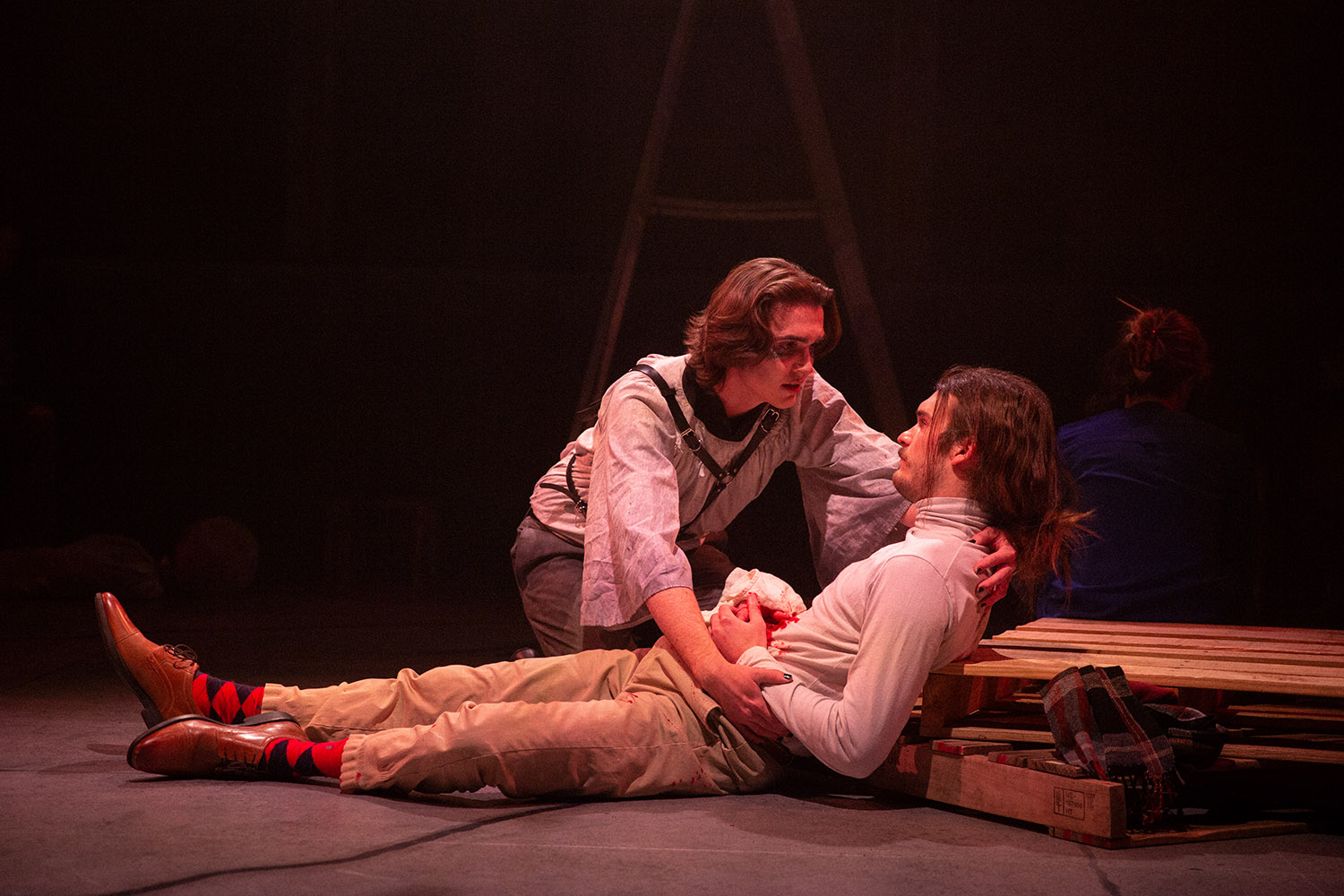“Liminal” Company (Photo: Todd Collins)
WRITTEN BY MARINA GOMBERG
Our brains take comfort in categorizing the world’s chaos into neatly labeled boxes. Maybe it’s because we like having our spaces clearly defined and our questions thoroughly answered. Or maybe it’s because we are wired to wonder, to be curious, and to seek understanding.
In other words, perhaps the joy is achieving the end result, and perhaps the height of pleasure is actually the act of getting there.
The process through which the four primary creators of the project “Liminal” have undergone demonstrates this very possibility. The depth of respect, flexibility, support, and faith that Film & Media Arts’ Assistant Professors (and twin sisters) Miriam and Sonia Albert-Sobrino shared with Theatre Assistant Professors Alexandra Harbold and Robert Scott Smith was nearly tangible during the conversation about this collaboration. The process of making, for them, has been everything.
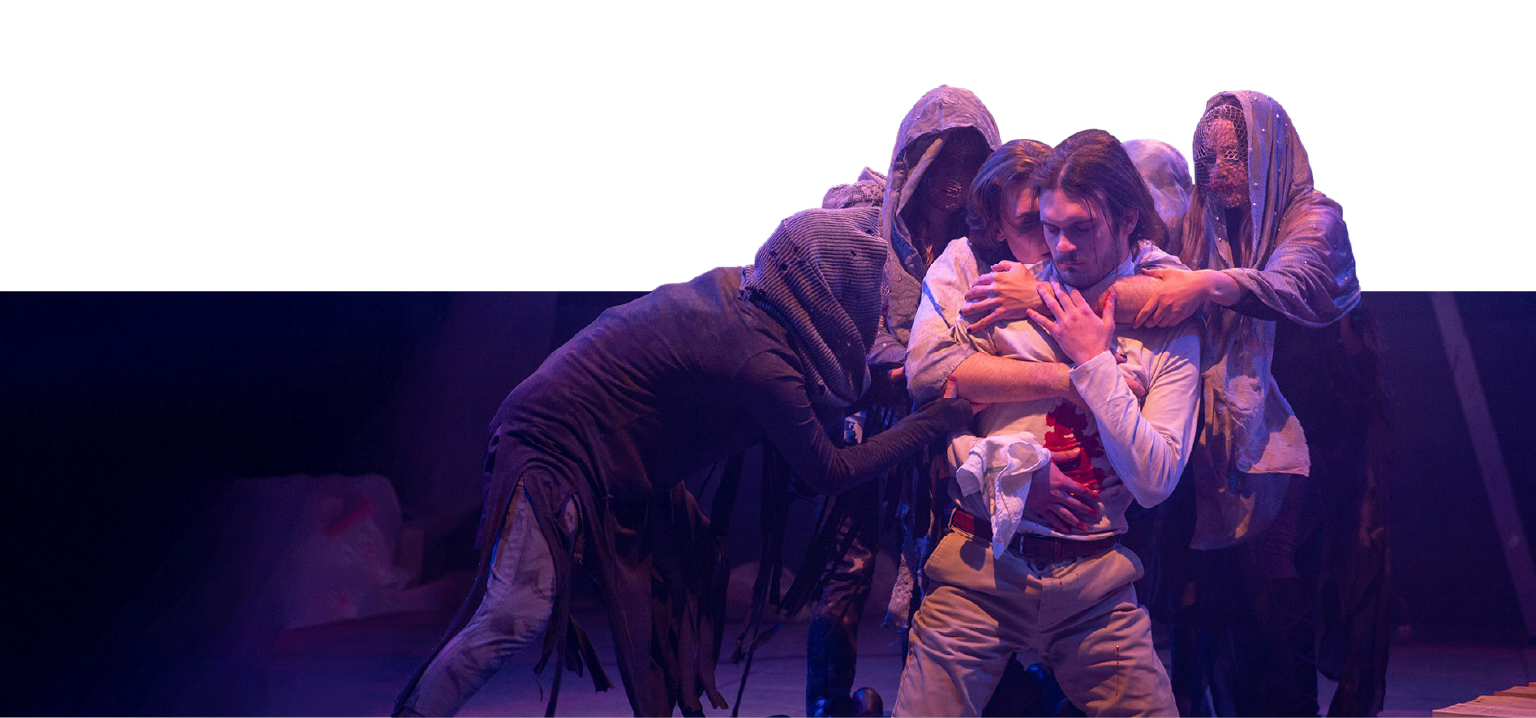
Nicolas Bianchi and the Shadows (Photo: Todd Collins)
Together, they decided to take on the challenge of creating a new portmanteau transmedia work: a story told one part via theatrical production and the other part through film, where both pieces stand alone while complementing and contextualizing the other.
The story itself is one that mirrors both the process of making it and the professors’ modus operandi.
“Our research and our work is liminal,” Sonia said. “What we do can’t be put in a box — it’s fluid.”
In the show, a cosmic event has brought together an unlikely crew who ultimately seek to understand their place and circumstance. One person’s body hasn’t made it completely into this unknown, new space, and is suspended between what they can see and whatever else is out there. With an arm stuck in the wall, they are physically part of what is holding up everything else.
The sisters’ love of horror scratched an itch Smith had felt for some time. And though there is some violence, disembodiment, and death in the show, it’s rich in comedic value and moments of well-timed levity.
The professors’ shared vision of the story itself and how it would be told took many a fluid turn as they responded to the pulls of life, their teaching responsibilities, and all of it happening during a global pandemic. Their suspension of typical conventions was emblematic of the work they produced.
“‘Resilience’ is a word that keeps coming to mind,” Harbold said as the four discussed the shift from having the film and theatre pieces released simultaneously to sequentially, because the film portion is still in production. “The fluidity of this project has patterned out. And the ability to recognize the needs to pivot have actually been gifts in the creative process.”
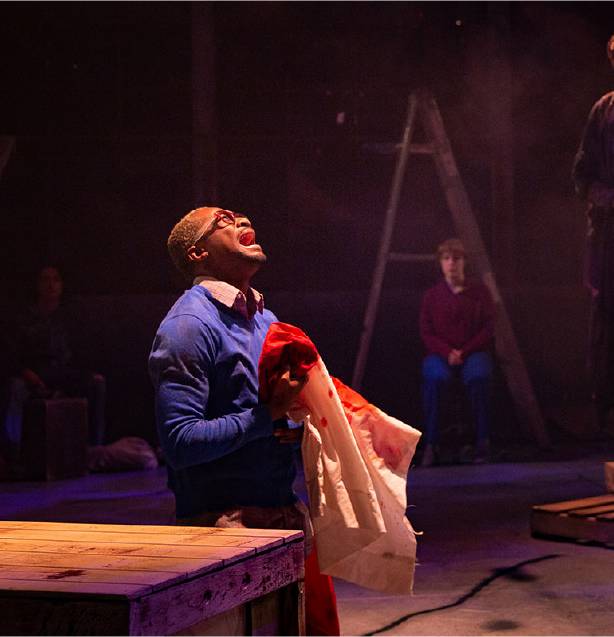
Toby Okhimamhe (Photo: Todd Collins)
Smith spoke of the same benefits of being adaptive. “The show doesn’t always need to go on,” he said (and the sound of a mic dropping could be heard somewhere in the distance). “By slowing down this process, giving it time to breathe, saturate, and grow, we both broke the mold for what it looks like to make art in a typically deadline-driven environment and it allowed us to ultimately be creating something with even greater potential.”
The plan, as of the time of the interview anyway, was to premiere “Liminal,” the play in spring of 2022 (which it did to great acclaim) and to complete the film portion the following year, allowing it the space and time to be shown on the film festival circuit before mounting both again, together, perhaps even in a higher profile environment.

Harbold and Smith’s production company, Flying Bobcat Theatrical Laboratory, took the lead on the making of the theatre work, and had the benefit of playwright Brandon Ngo’s writing and Troy Duetsch’s work transforming it into a stage play.
And while the film portion of this work will be completed second, Miriam and Sonia, the Also Sisters, were intimately involved in the conception of the original story, as was the cast itself who, through an audition process that involved devising the piece together, got to shape the narrative in significant ways.
During the auditions, the directors split up the actors into small assigned groups and gave them three prompts and 15 minutes to process. They then brought the actors back group by group and gave them 15 more minutes to share out what ideas had emerged. Many of their ideas acted as seeds that were sown into what ended up being the final theatre product.
That empowered involvement from the cast early on in the process was crucial to its success as pieces and players had to shift due to extenuating circumstances and safety protocols.
“Even if a cast member had to change roles or an understudy stepped up,” Miriam described. “Because everyone had been so invested from the beginning, those shifts felt smooth and people seemed willing and able to adjust. Despite its challenges, this has been one of the most rewarding and exciting projects we’ve done in years.”
Her pride is shared.
“This has been such a collaborative force and an almost nomadic art form,” Harbold said, smiling.
“It has made me so proud of our students, of whom we’ve asked a lot, and of ourselves that despite it all, we’ve stayed buoyant.”
In honor of the ongoing and two-pronged nature of this project, we plan to follow this piece with a second story in Studio ’23 highlighting the film component of “Liminal.” ▪



